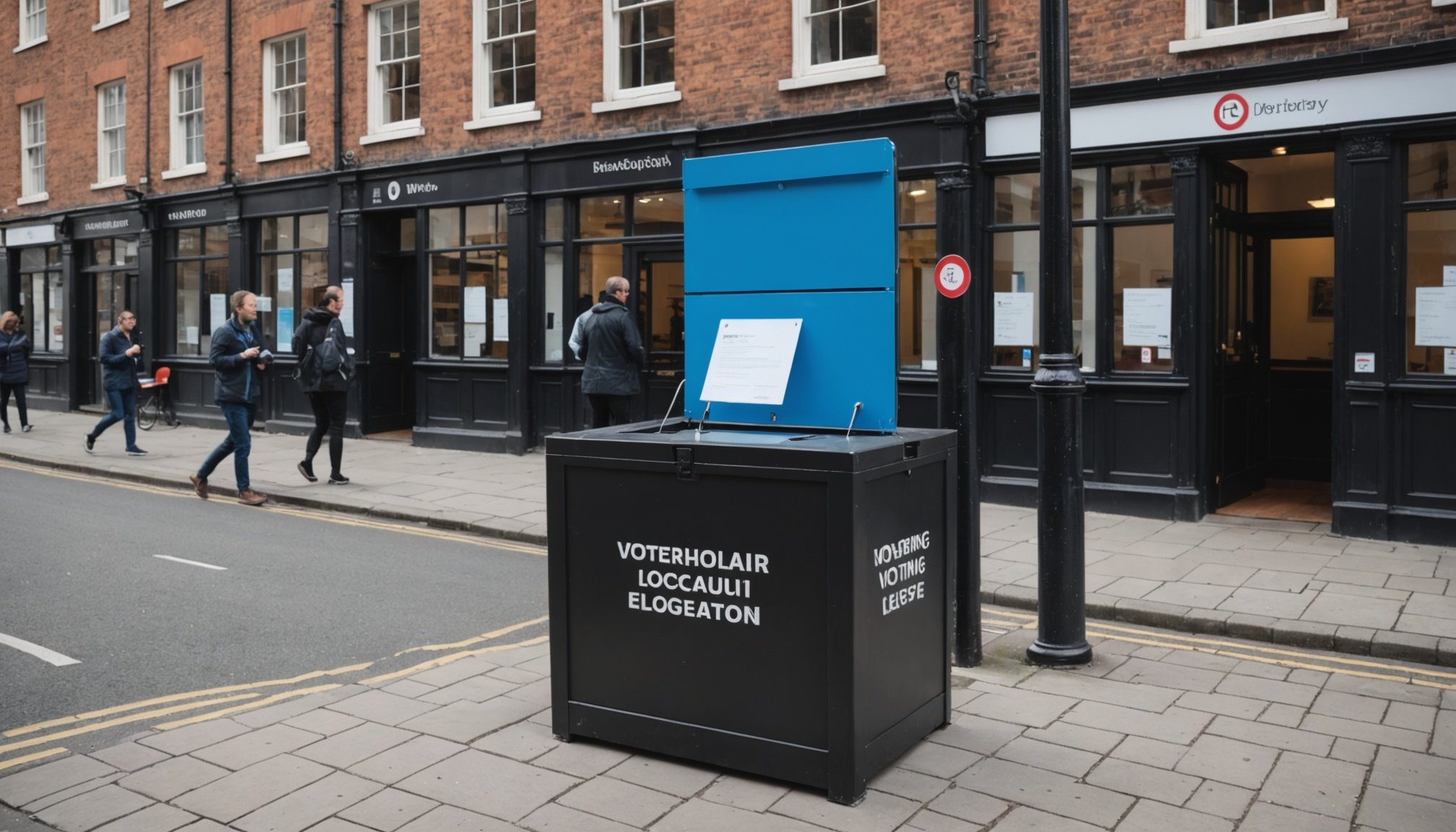Overview of Blockchain Technology
Blockchain technology is a decentralised, distributed ledger system that records transactions across multiple computers in such a way that ensures security and transparency. Each transaction is stored in a “block,” and blocks are linked in chronological order, forming a “chain”. This design prevents unauthorised alterations, as changing one block would require altering every subsequent block across all copies of the ledger.
An increasingly significant application of blockchain is in voting systems. Blockchain technology enhances voting systems by providing security, transparency, and immoral alteration resistance. Voters and officials can trace votes’ paths, ensuring votes are accurately recorded and counted. This level of security is particularly important in high-stakes environments where election integrity is paramount.
Additional reading : Design realistic book mockups effortlessly and engage readers
However, the application of blockchain in voting presents challenges alongside its benefits. Some hurdles include the need for widespread technological infrastructure and consensus on implementation. There are concerns about the scalability of such systems during peak voting periods. Despite these challenges, the decentralised nature, security, and accountability provided by blockchain present a compelling solution for modernising and safeguarding voting processes. As blockchain technology evolves, its role in securing sensitive systems, such as voting, will likely continue to expand, offering promising advances in transparency and trust.
Understanding Security Protocols
Security protocols are essential components in safeguarding blockchain systems, particularly in voting contexts. They ensure that transactions are conducted safely and manage encryption and data integrity. To protect voter information, encryption plays a crucial role. Essentially, it transforms readable data into a coded format, accessible only with a decryption key. This ensures that unauthorized individuals cannot access sensitive details, maintaining confidentiality.
Essential Security Protocols
In blockchain, security protocols such as TLS (Transport Layer Security) and SSL (Secure Sockets Layer) are pivotal. They prevent eavesdropping and tampering by establishing encrypted links between networked computers. Other protocols, like HTTPS, help secure communication over the internet, vital for transmitting voting data securely.
Additionally, ensuring data integrity is paramount. This involves maintaining and ensuring the accuracy and consistency of data over its entire lifecycle. Blockchain ensures this by using cryptographic hash functions that validate each block of data. If even a small change occurs in the data, the hash value alters, indicating a discrepancy.
Ultimately, these protocols and practices work hand-in-hand in protecting voter privacy and maintaining trust in blockchain systems. They foster security and reliability, integral components in any trustworthy voting process.
Legal and Regulatory Considerations
Navigating the complex waters of legal compliance is crucial for implementing blockchain voting in the UK. As blockchain technology ventures into the political arena, it must adhere to stringent UK electoral laws designed to ensure fairness and transparency.
One of the principal regulations involves the comprehensive understanding of implementing blockchain systems within the framework of existing electoral practices. This necessitates a thorough examination of laws regulating data protection and voter privacy, ensuring that blockchain solutions meet national standards.
To ensure compliance with UK electoral law, organisations should undertake several critical steps. Engaging legal experts who specialise in electoral law can provide valuable insights and guidance, thus aiding in the deployment of legally sound solutions. Developing a robust compliance strategy that addresses data security and voter anonymity is equally vital.
Engaging with stakeholders forms another layer of this process. Interaction with political parties, Electoral Commission officials, and voter advocacy groups can foster consensus and validation of blockchain voting systems. These discussions also help anticipate and address potential legal roadblocks, enhancing the system’s acceptance.
In summary, any entity aiming to implement blockchain voting must meticulously navigate legal compliance and regulations, pointing to a collaborative approach that blends technology with established electoral laws in the UK.
Designing the Voting Platform
Designing a robust voting platform requires a keen focus on elements that enhance user experience. An effective blockchain voting platform must prioritize both security and simplicity. A streamlined user interface is essential, as it must facilitate a seamless voting process. This involves clear instructions and an intuitive layout that guides users effortlessly through each step of the vote-casting process.
Accessibility is another cornerstone of platform design. To ensure all voters can participate, the platform should include features that accommodate individuals with disabilities. This might include screen reader compatibility, adjustable text sizes, and voice-activated navigation. These accessibility features ensure inclusivity, allowing everyone to engage with the platform equally.
Testing and gathering feedback are crucial to refining the user interface and overall platform functionality. Regular user interface testing helps identify and eliminate potential usability issues before the platform goes live. Feedback from diverse user groups allows designers to make informed adjustments, resulting in a more user-friendly experience.
In the design phase, consider how these elements interconnect. The interface must not only be easy to navigate but also resilient to potential cyber threats. Thus, seamless integration of security measures that do not compromise the user’s journey is paramount for a successful voting platform design.
Step-by-Step Setup Process
Establishing a blockchain voting system requires meticulous planning and execution. The setup process begins with defining clear objectives and scope for the project, outlining the purpose, and establishing a project timeline. It is crucial to identify the stakeholders involved and assign clear roles to ensure effective project management.
Detailed Steps for Deployment
-
System Design: Develop the architecture and design of the system. This phase requires collaboration with technology experts to ensure that the implementation aligns with security and usability standards.
-
Infrastructure Setup: Set up the necessary hardware and software infrastructure. This includes selecting the right blockchain platform that supports smart contracts and handles high transaction volumes.
-
Integration and Testing: Integrate the blockchain system with existing voter databases. Rigorous testing should be conducted to identify and rectify any vulnerabilities or errors, ensuring the system functions seamlessly.
Project Management Considerations
Effective project management involves setting realistic timelines and milestones during the setup process. Constant communication among team members and with stakeholders helps navigate challenges that arise.
Common Pitfalls to Avoid
Avoid overestimating the security provided by blockchain technology alone. Ensuring end-to-end security involves protecting user devices and network connections from potential intrusions.
Implementing a blockchain voting system is complex, yet careful planning and execution ensure a smooth transition.
Real-World Examples of Blockchain Voting
Blockchain technology is transforming voting systems worldwide, with case studies revealing its efficacy in various regions. One practical application is West Virginia’s use of blockchain for military voters overseas, providing a secure platform that ensures transparency and trust. This initiative is a success story, demonstrating blockchain’s capability to streamline the voting process while safeguarding data integrity.
In the UK, practical applications of blockchain voting have been examined, showcasing improved efficiency and reduced fraud. The case studies indicate that digital ledgers effectively manage electoral processes, offering a reliable alternative to traditional methods. Furthermore, blockchain’s decentralized nature enhances the security of voter data, making it a viable choice for future elections.
Moving beyond success stories, lessons from these case studies highlight the importance of robust cybersecurity measures in blockchain implementation. Ensuring voter privacy and maintaining a smooth, user-friendly interface are crucial to widespread adoption.
Potential future applications include expanding blockchain voting to national elections, increasing accessibility, and minimizing human error in vote counting. As these technologies evolve, countries are poised to explore new practical applications of blockchain in voting, promising increased participation and confidence in democratic processes. By learning from existing case studies, future systems can be designed to meet the complex requirements of modern electoral landscapes.
Resources for Further Learning
Navigating the complexities of blockchain technology and developing a voting platform can be challenging. Thankfully, there are numerous learning resources available to aid in enhancing your understanding and skills. When aiming to comprehend blockchain thoroughly, one can start by exploring a variety of recommended materials including textbooks, online courses, and interactive simulations. These learning resources offer foundational knowledge and technical insights that are critical for best practices.
If you are seeking to create a voting platform, numerous templates and tools can simplify the development process. Online repositories like GitHub host a variety of open-source templates that provide pre-built frameworks. These resources are particularly beneficial for those who wish to focus on customizing solutions tailored to specific needs instead of starting from scratch. Utilizing these templates ensures that you adhere to industry best practices while accelerating development time.
Additionally, joining networks and organizations provides crucial ongoing support and community engagement. Organizations like Hyperledger and Enterprise Ethereum Alliance offer forums and newsletters that facilitate discussions and share best practices among peers. Being part of these communities not only keeps you informed of the latest advancements but also opens opportunities for collaboration and innovation.






